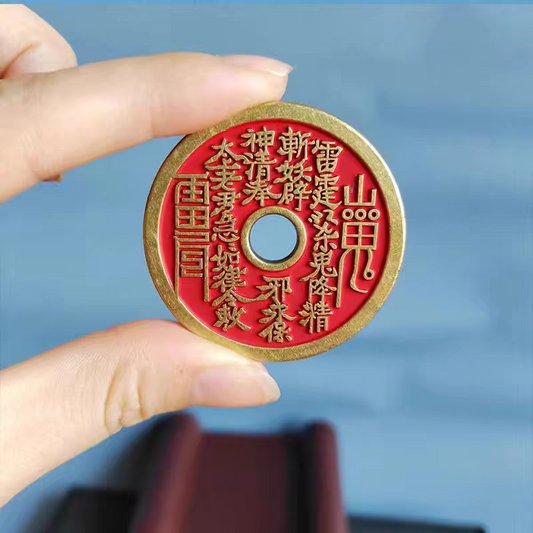
Where are the paradises and sacred places in Taoism?
paulpengShare
Taoist Celestial Caves and Blessed Lands: Nature’s Sacred Womb – Your Guide to Earth’s Spiritual Hotspots
Where Heaven Touches Earth
In the misty mountains of China, Taoist sages believed certain places hummed with cosmic energy—gateways where the divine and the earthly merged. These are the 洞天福地 (Dòngtiān Fúdì: Celestial Caves and Blessed Lands), not just physical landscapes but living temples of Taoism. Unlike cathedrals or monasteries, they are nature itself: caves, peaks, and valleys revered as “earth’s chakras” (energy centers). Let’s explore these sacred sites—where geology meets spirituality—and discover why they’re vital to Taoist philosophy.
1. What Are Celestial Caves and Blessed Lands?
Definition
- Celestial Caves (洞天): Natural caves or grottoes seen as portals to immortality. Legend says immortals (仙人) dwell here, and their energy (qi) nourishes seekers.
- Blessed Lands (福地): Valleys or mountains where heaven-earth harmony is tangible. Think of them as nature’s monasteries—no walls, just wild beauty.
Philosophy
Taoism teaches “heaven and earth are the greatest temple” (天地为大炉). These sites are not built—they’re discovered. A cave’s stalactites mirror the heavens’ pillars; a mountain’s shape embodies the Tao’s balance. As the Daozang (道教藏经,Taoist Canon) states: “The earth breathes through its caves; the mountains sing with the Tao’s voice.”
2. The Geography of Divinity: Where Are They?
Taoist texts list 10 Celestial Caves and 36 Blessed Lands, scattered across China. Each has a unique energy:
| Site | Location | Symbolism | Practical Tip |
|---|---|---|---|
| Mount Tai (泰山) | Shandong Province | “East Great Mountain,” axis of heaven-earth. | Hike the “18 Bends” to the summit—legendary sunrise views. |
| Qingcheng Mountain (青城山) | Sichuan | Birthplace of Taoism (Zhang Daoling’s cave). | Visit the Shangqing Temple, built into cliffs. |
| Yandang Mountain (雁荡山) | Zhejiang | “Wild Goose Caves”—home to flying immortals. | Explore Lingfeng Grotto, a natural amphitheater. |
| Luofu Mountain (罗浮山) | Guangdong | “Floating Cloud Mountain,” elixir-making hub. | Hike to the “Nine-Dragon Waterfall,” said to purify sins. |
Why These Locations?
- Feng Shui (风水): Mountains (yang) and water (yin) create balanced qi. Caves (yin) and peaks (yang) are ideal for meditation.
- Mythology: Many sites link to immortals. For example, Mount Emei (峨眉山) is where the goddess White-Elephant Immortal attained enlightenment.
3. Taoist Practices in Blessed Lands
Rituals of Nature
- Cave Meditation (洞修): Practitioners meditate in caves, believing stalactite drips (yin) and cave air (yang) harmonize their qi.
- Mountain Pilgrimage (朝山): Pilgrims climb peaks like Wudang Mountain (武当山) (Hubei) to absorb martial arts energy (tai chi’s birthplace).
- Stone Altars (石坛): No man-made altars—natural stones become offerings. A moss-covered boulder might represent the Earth Mother.
Example: The “Three Steps to Immortality” at Mount Hua (华山)
- Ascend the “Plank Road” (悬崖栈道): A terrifying cliffside path—tests courage (yang virtue).
- Meditate at “Jade Spring Temple” (玉泉院): Drink spring water (yin) said to cure ailments.
- Sleep in a Cave: Legend says one night in Chanzi Cave (馋子洞) grants clarity.

Taoist Proverb: “A mountain is a teacher; a cave is a monastery.”
4. Contrast with Other Religions’ Sacred Sites
| Aspect | Taoist Blessed Lands | Other Religions (e.g., Christianity, Buddhism) |
|---|---|---|
| Sanctity Source | Natural geography (caves, peaks) | Divine revelation (scriptures, holy relics) |
| Purpose | Qi cultivation, immortality | Worship, salvation, enlightenment |
| Architecture | Minimalist (natural + simple temples) | Ornate buildings (churches, stupas) |
| Access | Open to all (pilgrims, hikers) | Often controlled by clergy |

Case Study: Meishan Sacred Valley (梅山圣地) (Hunan) vs. Vatican City. One is a wild valley where villagers leave offerings on stone altars; the other is a man-made city-state. Both are sacred—but Taoism’s sanctity is discovered, not constructed.
5. Modern Relevance: Why Visit Today?
Eco-Spirituality
Taoist sites are early examples of ecological spirituality. Parks like Zhangjiajie National Forest Park (Hunan, a Blessed Land) ban plastic to preserve qi—a model for sustainable tourism.
Wellness Tourism
- Qigong Retreats: At Longhu Mountain (龙虎山) (Jiangxi), learn “Dragon and Tiger Qigong” amid bamboo forests.
- Herbal Therapy: Songshan Mountain (嵩山) (Henan) offers medicinal herb walks—Taoists believe plants absorb mountain qi.
Cultural Insight
These sites reveal Taoism’s core: no separation between the sacred and the secular. A farmer in Huangshan (黄山) (Anhui) might say, “My field is a Blessed Land—every rice stalk dances with the Tao.”
How to Explore Taoist Blessed Lands (Tips for Travelers)
- Respect the Energy: Remove shoes in caves; speak softly (sound carries qi).
- Follow Local Rituals: At Mount Song, join the “Morning Cloud Prayer” (清晨拜云)—offer a bow to the sunrise.
- Stay Overnight: Many sites have Taoist guesthouses (e.g., Baiyun Temple on Qingcheng Mountain). Wake up to monks chanting “Morning Star Incantation” (启明星咒).

Packing List: Comfortable shoes (for hiking), a journal (caves inspire poetry), and an open mind (no expectations—let the mountain teach you).
Conclusion: Earth as Temple
Taoist Celestial Caves and Blessed Lands are not just “holy places”—they’re a philosophy in stone and sky. While Christianity has Jerusalem and Buddhism has Bodh Gaya, Taoism offers a radical idea: the entire planet is sacred. A cave is not a metaphor for the soul—it is the soul, intertwined with every tree, river, and star.
As Taoist master Ge Hong wrote: “He who drinks from a Blessed Spring becomes immortal—not through magic, but by remembering he is already one with the universe.”
For the adventurous traveler, these sites offer a chance to touch the Tao—not as a distant concept, but as the moss underfoot, the mist on your face, and the ancient silence of a cave.














